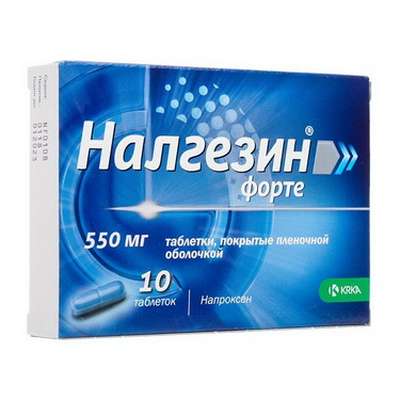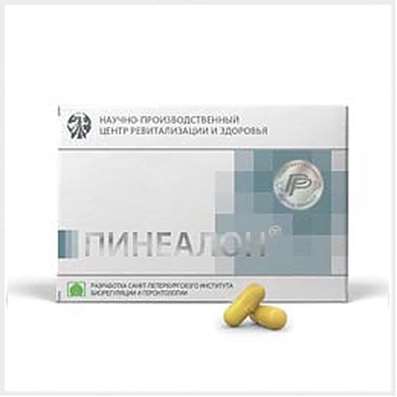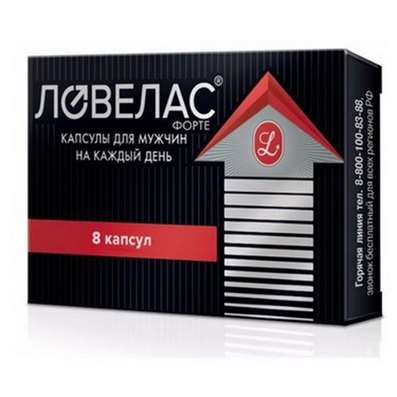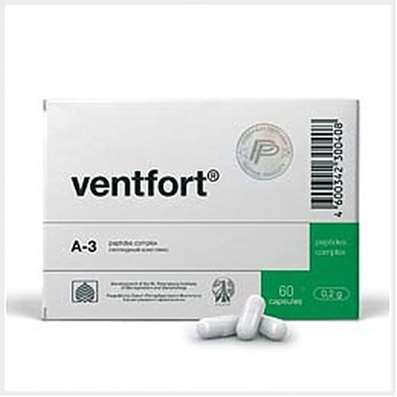Instruction for use: Infukoll HES
I want this, give me price
Dosage form: Solution for infusions
Active substance: Amylum hydroxyaethylicum
ATX
B05AA07 Hydroxyethyl starch
Pharmacological group
Substitutes for plasma and other blood components
The nosological classification (ICD-10)
E86 Decreased fluid volume [hypovolaemia]: Water deficit recovery; Indemnification of isotonic deficiency of water; Compensation for isotonic sodium deficiency; Compensation BCC; Replenishment of water deficit with stored KShS; Replenishment of fluid volume; Replenishment of BCC; Replenishment of electrolytes with stored KHS; Hypovolemic conditions; Hypovolemic condition; Hypovolemia; Hypotonic form of hypohydration; Hypochloremia with dehydration; Dehydration of different origin; Dehydration in children; Substitution of plasma volume for blood loss in pediatrics; Substitution of plasma with its losses and burns; Isotonic dehydration; Isotonic form of hypohydration; Violation of the water-salt balance; Dehydration;Dehydration in acute intestinal infections; Acute hypovolemia; Loss of fluid in burns; Toxicosis with exsycosis
I63 Cerebral infarction: ischemic Stroke; Ischemic brain disease; Ischemic stroke; Ischemic stroke and its consequences; Ischemic cerebral stroke; Ischemic cerebrovascular accident; Ischemic brain damage; Ischemic brain damage; ischemic conditions; Cerebral ischemia; Acute hypoxia brain; Acute cerebral ischemia; Acute ischemic cerebrovascular accident; Acute cerebral infarction; Acute ischemic stroke; Acute period of ischemic stroke; Focal cerebral ischemia; Ischemic stroke; recurrent stroke; The syndrome of Morgagni-Adams-Stokes; Chronic cerebral ischemia; cerebrovascular stroke; embolic stroke; Ischemic brain damage
I70.2 Atherosclerosis of arteries: arteriosclerosis obliterans; Arteriosclerosis peripheral arteries; Atherosclerosis of the arteries of the lower extremities; Atherosclerosis of peripheral arteries; Atherosclerosis limbs; Occlusive disease of the lower extremities; arteriosclerosis obliterans; Arteriosclerosis obliterans of lower limb arteries; Atherosclerosis obliterans of the upper limbs; Arteriosclerosis obliterans of lower extremities; Atherosclerosis of arteries; limb arteriopathy; Arteriosclerosis obliterans limbs; arteriosclerosis obliterans
I79.2 Peripheral angiopathy in diseases classified elsewhere: diabetic angiopathy; Angiopathy in diabetes; arteriosclerosis diabetic; Pain in lesions of peripheral nerves; Diabetic angiopathy; Diabetic microangiopathy; Diabetic vascular disease; Intermittent angioneurotic disbaziya; Macroangiopathy in diabetes; microangiopathy; Microangiopathy in diabetes mellitus; Tingling sensations in the hands and feet; Coldness in the extremities; Peripheral angiopathy; Peripheral arterial disease; Sclerosis Menkeberga; Chronic obliterating diseases of arteries
J44.9 Chronic obstructive pulmonary disease, unspecified: Obstructive pulmonary pathology; Bronchial obstruction; Bronchoobstructive syndrome; Exacerbation of chronic obstructive pulmonary disease; Reversible bronchial obstruction; Reversible airway obstruction; Panbronchiolitis; Panbronchitis; COPD; Chronic lung infection; Chronic infection of the lower respiratory tract; Chronic obstructive pulmonary disease; Chronic Obstructive Pneumonia; Chronic lung diseases; Chronic Obstructive Pulmonary Diseases; Chronic bronchopulmonary disease; Chronic broncho-pulmonary diseases; Obstruction of the respiratory tract
O26.8 Other specified conditions associated with pregnancy: Abnormal course of pregnancy; Constipation in pregnant women; Early toxicosis of pregnancy; Toxicosis of pregnant women; Toxicosis of pregnant early; Asthenia of pregnant women; Heartburn during pregnancy; Appetite perverted in pregnant women; Vaginal discharge during pregnancy; Constipation during and after pregnancy; Nephropathies of pregnant women; Toxicosis of pregnancy; Fever in Pregnancy
O36.5.0 * Placental insufficiency
P61.1 Polycythemia of the newborn: Polycythemia in newborns; Polycythemia of newborns
R57.1 Hypovolemic shock: Hypovolemic shock during surgery; Acute hypovolemia
R58 Bleeding, not elsewhere classified: Abdominal apoplexy; Hemorrhagia; Haemorrhage of the esophagus; Hemorrhage; Generalized bleeding; Diffuse bleeding; Diffuse bleeding; Prolonged bleeding; Blood loss; Blood loss during surgical interventions; Bleeding during surgery and in the postoperative period; Bleeding during labor; Bleeding and haemorrhage in hemophilia B; Bleeding from the gums; Bleeding intraoperative abdominal; Bleeding against a background of coumarin anticoagulants; Hepatic hepatitis; Bleeding in hemophilia A; Bleeding at hemophilia A; Bleeding with inhibitory forms of hemophilia A and B; Bleeding due to leukemia; Bleeding in patients with leukemia; Bleeding; Bleeding due to portal hypertension; Bleeding due to hyperfibrinolysis; Drug bleeding; Local bleeding; Local bleeding due to activation of fibrinolysis; Massive blood loss; Acute blood loss; Parenchymal hemorrhage; Hepatic bleeding; Postoperative hemorrhage; Kidney bleeding; Vascular-platelet hemostasis; Traumatic bleeding; Threatening bleeding; Chronic blood loss
Z100 * CLASS XXII Surgical practice: Abdominal surgery; adenomectomy; Amputation; Coronary angioplasty; Angioplasty of the carotid arteries; Antiseptic skin treatment for wounds; Antiseptic Hand; Appendectomy; atherectomy; Balloon coronary angioplasty; Vaginal hysterectomy; The coronary bypass; Interventions in the vagina and cervix; Interventions on the bladder; Intervention in the mouth; Restoration and reconstructive surgery; Hand hygiene of medical personnel; Gynecologic surgery; Gynecological intervention; Gynecological surgery; Hypovolemic shock during operations; Disinfection of purulent wounds; Disinfection of wounds edges; Diagnostic intervention; Diagnostic procedures; Cervical Diathermocoagulation; Long-surgery; Replacing the fistula catheters; Infection in orthopedic surgery; Artificial heart valve; cystectomy; Short-term outpatient surgery; Short-term operation; Short surgical procedures; Krikotireotomiya; Blood loss during surgery; Bleeding during surgery and in the postoperative period; Kuldotsentez; laser photocoagulation; laser coagulation; retinal laser coagulation; Laparoscopy; Laparoscopy in Gynecology; CSF fistula; Small gynecological operations; Small surgical procedures; Mastectomy and subsequent plastic; mediastinotomy; Microsurgical operations on the ear; Mukogingivalnye operation; suturing; Minor surgery; neurosurgical operation; Immobilization of the eyeball in ophthalmic surgery; testectomy; pancreatectomy; Perikardektomiya; The period of rehabilitation after surgery; The period of convalescence after surgery; Percutaneous transluminal coronary angioplasty; Pleural thoracentesis; Pneumonia postoperative and posttraumatic; Preparation for surgical procedures; Preparation for surgery; Preparation of the surgeon's hands before surgery; Preparation of the colon for surgical procedures; Postoperative aspiration pneumonia in neurosurgical and thoracic surgery; Postoperative nausea; Postoperative bleeding; postoperative granuloma; postoperative shock; The early postoperative period; myocardial revascularization; Radiectomy; gastric Resection; bowel resection; uterine Resection; liver Resection; enterectomy; Resection of part of the stomach; Reocclusion of the operated vessel; Bonding tissues during surgical procedures; Removal of sutures; Condition after eye surgery; Condition after surgery; Condition after surgery in the nasal cavity; Condition after gastrectomy; Status after resection of the small intestine; Condition after tonsillectomy; Condition after removal of the duodenum; Condition after phlebectomy; Vascular surgery; Splenectomy; Sterilization of surgical instruments; Sterilization of surgical instruments; sternotomy; Dental surgery; Dental intervention in periodontal tissues; strumectomy; Tonsillectomy; Thoracic surgery; Thoracic surgery; total gastrectomy; Transdermal intravascular coronary angioplasty; Transurethral resection; Turbinektomiya; Removal of a tooth; cataract surgery; Removal of cysts; tonsillectomy; Removal of fibroids; Removing the mobile primary teeth; Removing polyps; Removing broken tooth; Removal of the uterus body; Removal of sutures; Fistula likvoroprovodyaschih ways; Frontoetmoidogaymorotomiya; Surgical infection; Surgical treatment of chronic limb ulcers; Surgery; The surgery in the anal area; The surgery on the colon; Surgical practice; The surgical procedure; Surgical interventions; Surgery on the gastrointestinal tract; Surgical procedures on the urinary tract; Surgical procedures on the urinary system; Surgical intervention of the genitourinary system; Surgical procedures on the heart; Surgical manipulation; surgery; Surgery on the veins; Surgical intervention; Vascular surgery; Surgical treatment of thrombosis; Surgery; cholecystectomy; Partial gastric resection; hysterectomy; Percutaneous transluminal coronary angioplasty; Percutaneous transluminal angioplasty; Coronary artery bypass; tooth Extirpation; Extirpation of milk teeth; pulpectomy; pulsative cardiopulmonary bypass; tooth Extraction; teeth Extraction; cataract extraction; Electrocoagulation; endourological intervention; episiotomy; Etmoidotomiya; Complications after tooth extraction
Z31.1 Artificial insemination: Fetal ovum; ICSI (Intra Cytoplasmic Sperm Injection); Controlled ovarian stimulation; Controlled superovulation; Controlled superovulation in artificial insemination; Treatment of insemination; Fertilization artificial; Premature ovulation; The IVF program; The program of in vitro fertilization; Superovulation
Composition and release form
Solution for infusions 6% - 1 l
Hydroxyethyl starch (pentastarch) 60 g
(Degree of substitution 0.45-0.55, average molecular weight 200,000 daltons)
Sodium chloride 9 g
Excipients: water for injection - up to 1 liter
Sterile pyrogen-free solution, pH 5.0-7.0; Na + - 154 mmol / l; Cl- - 154 mmol / l; Theoretical osmolarity - 309 mosmol / l
In vials of 100, 250, 500 ml; Or in polymeric bags Propyflex® (Propiflex) for 250 and 500 ml.
Solution for infusions 10% - 1 l
Hydroxyethyl starch (pentastarch) 100 g
(Degree of substitution 0.45-0.55, average molecular weight 200,000 daltons)
Sodium chloride 9 g
Excipients: water for injection - up to 1 liter
Sterile pyrogen-free solution, pH 5.0-7.0; Na + - 154 mmol / l; Cl- - 154 mmol / l; Theoretical osmolarity - 309 mosmol / l
In vials of 100, 250, 500 ml; Or in polymeric bags Propyflex® (Propiflex) for 250 and 500 ml.
Description of dosage form
Colorless or yellowish, clear or slightly opalescent liquid.
Characteristic
Infusion solution Infukoll HES is a 6 or 10% solution of a synthetic colloid of hydroxyethyl starch, obtained from potato starch.
Pharmacodynamics
Physico-chemical parameters of the original substance of the drug Infukol HES provide high therapeutic efficacy in hypovolemia and shock, and also when used for therapeutic hemodilution due to normalization of central and peripheral hemodynamics, microcirculation, improved delivery and consumption of oxygen by organs and tissues, restoration of porous capillary walls (normalization Permeability of the vascular wall), reduction of the local inflammatory response, activation of a full immune response, mobilization of blood elements from physiological deposition and their involvement in active metabolism against a background of moderate hemodilution. Due to the ability to bind and retain water (including from the interstitial space to the intravascular space), the drug has a volatile effect in the range of 85-100% and 130-140% (for 6 and 10% solution respectively) of the introduced volume, which is stably stored in For 4-6 hours In addition, the drug improves the rheological properties of the blood by reducing the hematocrit, reduces the viscosity of the plasma, reduces platelet aggregation and prevents the aggregation of red blood cells. The drug does not show a local irritating and immunotoxic effect. Infuxol HES is deposited in the cells of the reticulo-endothelial system without manifestations of toxic effects on the liver, lungs, spleen and lymph nodes. Under the action of amylase serum Infukol HES is split into low-molecular fragments (less than 70,000 daltons), which are removed by the kidneys. The similarity of the structure of Infukol HES with the structure of glycogen explains the high level of tolerance and almost complete absence of adverse reactions. It is established that the drug does not have embryotoxic and teratogenic effects.
Pharmacokinetics
12 hours after the administration of the drug, Cmax in the serum is (11.1 ± 2.7) mg / ml, Cl creatinine - 7.33 ml / min, T1 / 2 - 4.94 hours; On the third day after the introduction of serum, traces of hydroxyethyl starch are determined. During the first 12 hours after the initiation of the drug in the urine, there is (24.48 ± 3.93) mg / ml hydroxyethyl starch (49% of the administered amount).
Indications of the drug Infukoll HES
Prevention and treatment of hypovolemia and shock during surgery, acute blood loss, trauma, burns, infectious diseases, etc .;
Disorders of microcirculation;
Therapeutic blood dilution (hemodilution), incl. In the therapy of ischemic strokes (acute and subacute stages, acute ischemic stroke with reduced volume of cardiac output and microangiopathies, in the presence of signs of dehydration and hypovolemia, in the presence of signs of hemoconcentration - hematocrit more than 35%), fetoplacental insufficiency and gestosis in pregnant women, antiphospholipid syndrome In women, IVF, polycythemia in newborns, obliterating lesions of the vessels of the lower extremities, chronic obstructive pulmonary diseases, etc.
Contraindications
Hyperhydration; Hypervolemia;
Decompensated heart failure;
Renal failure with decompensated oliguria or anuria;
Allergy to starch;
Cardiogenic pulmonary edema;
Intracranial hemorrhages;
Severe bleeding disorders.
Contraindications to the use of therapeutic hemodilution in acute disorders of cerebral circulation:
Severe hemorrhagic diathesis;
Myocardial infarction within the last 6 weeks;
Angina pectoris of the IV functional class, all variants of unstable angina;
Circulatory insufficiency IIB-III stage;
Chronic renal failure (creatinine level> 2 mg / dL);
Significant increase in intracranial pressure;
Convulsive seizures in the anamnesis;
Profuse bleeding;
Initial hematocrit values less than 35%;
Poorly corrected by hypotensive therapy, hypertension (SAD more than 180 mm Hg and DAD - more than 120 mm Hg).
Pregnancy and breast-feeding
In the first trimester of pregnancy, use caution.
Side effects
Allergic reactions and extremely rare anaphylactoid reactions to hydroxyethyl starch are possible.
Possible hemodynamic disorders (with too rapid IV introduction or application of too large doses).
Occasionally, a persistent but reversible itching may occur.
The introduction of the drug has an effect on the results of determining the activity of serum amylase, which is not associated with clinical manifestations of pancreatitis. The drug Infukoll HES can be used for conservative and surgical treatment of patients with destructive pancreatitis.
Interaction
Do not mix the drug with other drugs in a single container or system.
Dosing and Administration
In the absence of other prescriptions, the drug Infukoll HES is administered IV, drip according to the need to replace the volume of the circulating fluid or the required level of hemodilution. Doses of the drug are presented in the table.
Table
| Age group | Average daily dose, ml / kg body weight | Maximum daily dose, ml / kg body weight | ||
| 6% solution | 10% solution | 10% solution | 10% solution | |
| Adults and children over 12 years of age | 33 | 20 | 33 | 20 |
| Children, 6-12 years old | 15–20 | 10–15 | 33 | 20 |
| Children 3-6 years old | 15–20 | 10–15 | 33 | 20 |
| Newborns and children under 3 years old | 10–15 | 8–10 | 33 | 20 |
The daily dose and I / O rate are calculated depending on blood loss, hemoglobin concentration and hematocrit. In young patients without the risk of cardiovascular and lung damage, the limit of the drug Infukoll HES is considered to be a hematocrit value equal to 30% or less.
The maximum daily dose: up to 33 and 20 ml / kg / day (2.0 g of hydroxyethyl starch / kg / day) - for 6 and 10% solution, respectively.
The maximum infusion rate depends on the initial hemodynamic parameters and is approximately 20 ml / kg / h.
Standard version of therapeutic hemodilution for ischemic stroke.
1. "Batch dose" depending on the hematocrit value:
A) when the hematocrit is less than 40% (hypervolaemic therapeutic hemodilution): 500 ml of a 6% solution of HFC infusion and 500 ml of electrolyte solution for 1 hour;
B) with a hematocrit of more than 40% (isovolemic therapeutic hemodilution): taking 500 ml of blood with the simultaneous administration of 500 ml of a 6% solution of Infukol HES and 500 ml of electrolyte solution for 1 hour.
2. Therapeutic hemodilution in 1-4 days:
A) when the hematocrit is less than 40% (hypervolaemic therapeutic hemodilution): 1000 ml of a 6% solution of HFC infusion and 1000 ml of electrolyte solution for 24 hours;
B) with a hematocrit of more than 40% (isovolemic therapeutic hemodilution): taking 500 ml of blood with simultaneous administration of 500 ml of a 6% solution of Infukol HES and 500 ml of electrolyte solution for 24 hours.
3. Therapeutic hemodilution for 5-10 days:
Hypervolaemic therapeutic hemodilution: 500 ml of a 6% solution of HFC infusion and 500 ml of electrolyte solution for 12 hours.
4. The use of cardiac glycosides according to the standard scheme in accordance with clinical indications.
5. Deceleration of platelet aggregation:
A) 1-4 days: a single injection of acetylsalicylic acid at 500 mg / day (with the exclusion of intracranial bleeding);
B) 5-10 day: a single injection of acetylsalicylic acid 500 mg / day and ascorbic acid (vitamin C) by 400 mg / day.
6. The use of hemorheologically active drugs (agents that improve cerebral circulation) and tools that improve brain metabolism:
- nootropics for clinical indications;
- Pentoxifylline in moderate doses (IV / 200-300 mg twice a day).
Initiate therapeutic hemodilution should be as early as possible (with the first contact with the patient).
An acute significant increase in intracranial pressure serves as a contraindication to the further conduct of therapeutic hemodilution; Minor intracranial hemorrhage is not a contraindication to the further conduct of therapeutic hemodilution.
The introduction of a 6% solution of Infukoll HES should be carried out continuously, incl. And at night. The volume of injected 6% solution of Infukoll HES should be correlated with the contractility of the myocardium (HR control).
It is possible to use an appropriate volume of 10% solution of Infukol HES with a corrective introduction of the electrolyte solution (it is necessary to avoid overloading with sodium).
When carrying out isovolemic hemodilution, the occurrence of hypovolemia is unacceptable: taking blood should occur simultaneously with the administration of a 6% solution of Infukoll HES, the rate of blood collection should never exceed the rate of administration of the infusion solution of HEK.
It is advisable to achieve an initial reduction in the hematocrit number by 12-15%.
When the threat of brain edema is shown: elevated body position (30 °); Position of head, facilitating venous outflow; Rapid introduction of hyperosmotic drugs (glycerin, sorbitol).
The introduction of cortisone and diuretics is not shown.
Overdose
No cases of overdose have been reported.
Precautionary measures
With caution - in the first 3 months of pregnancy; With hemorrhagic diathesis; With intracranial hypertension; At dehydration states (preliminary corrective therapy is required) and pronounced disturbances of the water-electrolyte balance.
Special instructions
In newborns and children under 3 years of age, it is recommended to adhere to the average daily dose of the drug. In connection with the peculiarities of the water-electrolyte status, careful monitoring of the level of hydration and the content of electrolytes is recommended in children.
It is necessary to monitor the ionogram of the serum.
It is necessary to monitor the introduction and balance of the liquid.
When performing treatment, kidney function should be monitored.
In case of intolerance reactions, IV administration is immediately stopped and the necessary urgent measures are taken.
Given possible anaphylactoid reactions, the first 10-20 ml of the Infusol HES preparation should be administered slowly, with careful monitoring of the patient's condition.
Consider the risk of overloading the circulatory system with too rapid administration or too high a dose of the drug.
Treatment of fetoplacental insufficiency and gestosis in pregnant women with elevated blood pressure should be conducted against a background of antihypertensive therapy.
The introduction of the drug to patients with diabetes mellitus is not accompanied by an increase in the level of glucose in the blood, so the drug Infukoll HES can be used for conservative and surgical treatment of this category of patients.
Use the drug Infukol HES only if the solution is clear, and the packaging is not damaged!
Storage conditions of the drug Infukoll HES
At temperture no higher than 25 ° C.
Keep out of the reach of children.
The shelf life of the drug Infukoll HES
Solution for infusions 6% - 3 years.
Solution for infusions 10% - 5 years.
Do not use beyond the expiration date printed on the package.

 Cart
Cart





